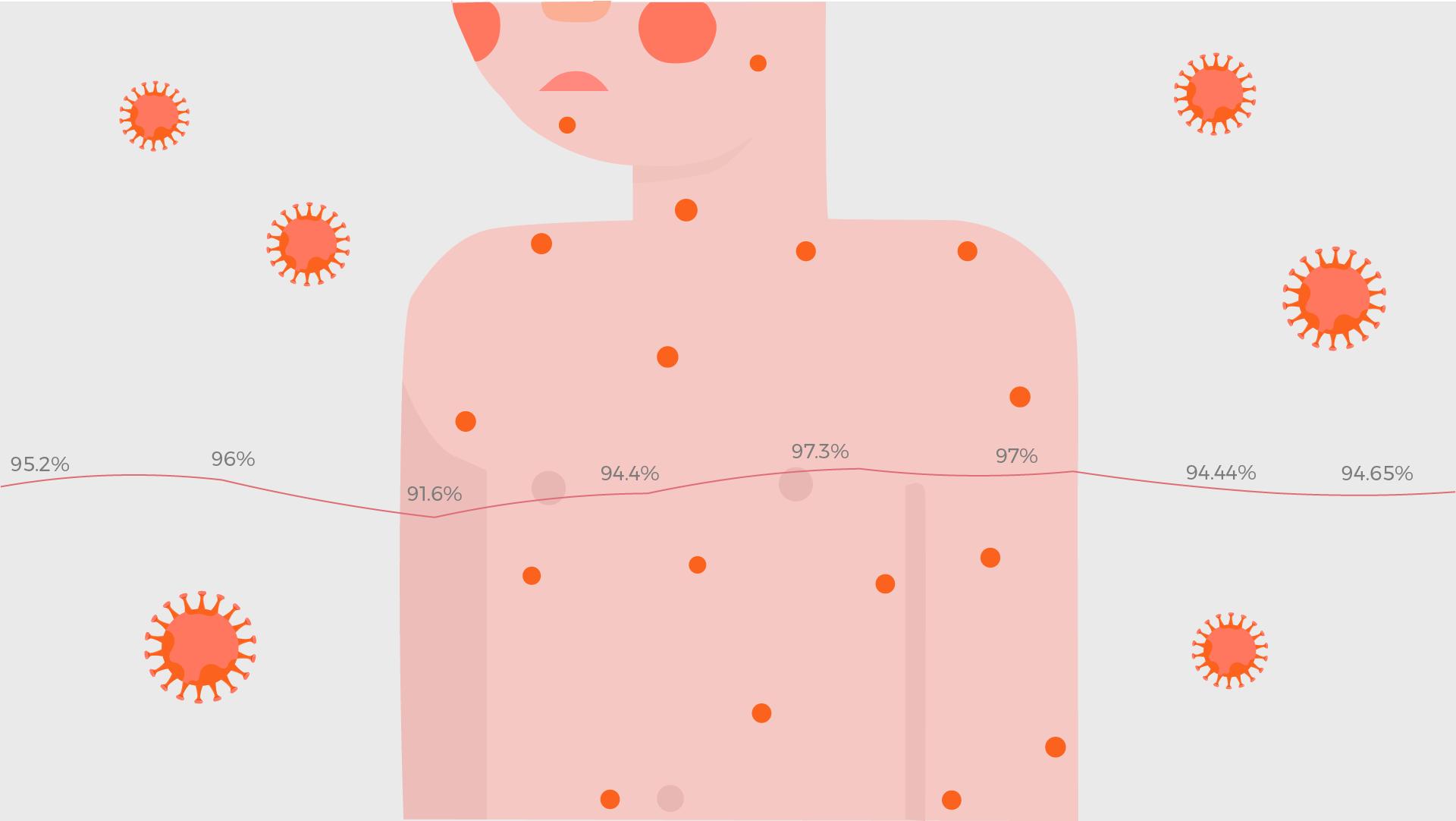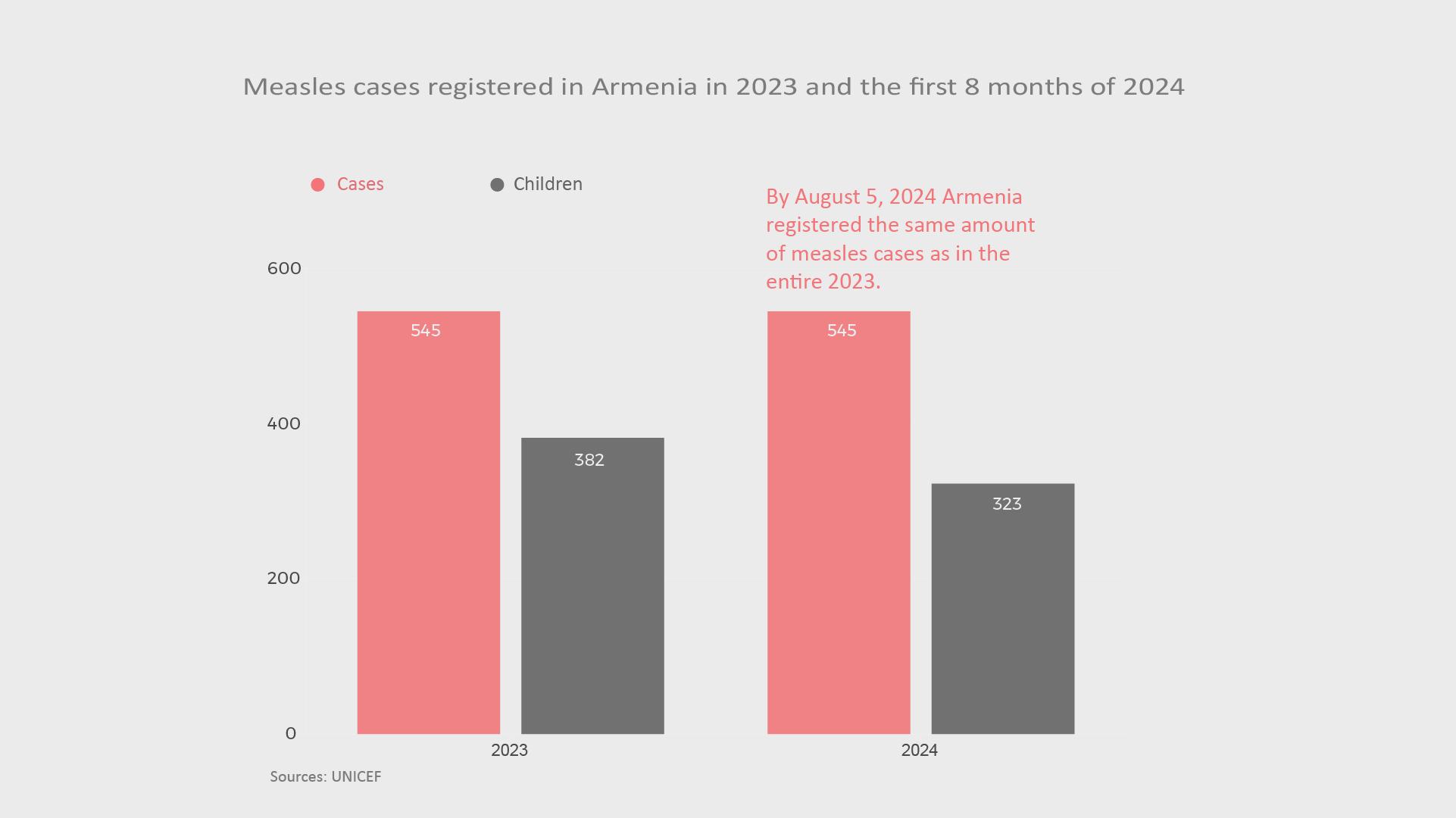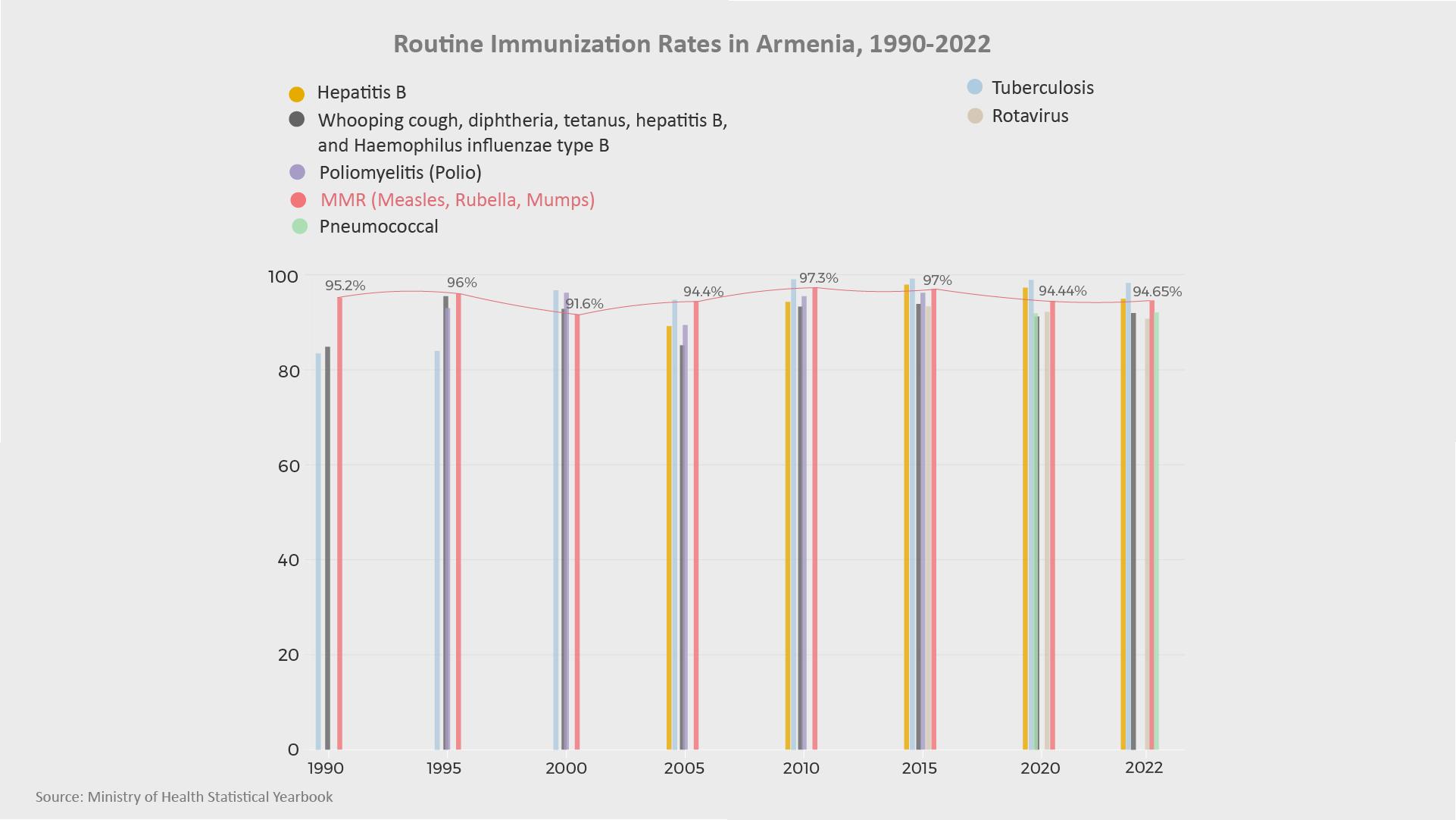
Immunization Rates and Vaccine Hesitancy in Armenia Amid Measles Surge
Vaccine hesitancy, though not new, has gained renewed attention around the world following the COVID-19 outbreak. Although skepticism and misinformation about vaccines have long existed, the coronavirus outbreak has fueled a resurgence of myths, potentially leading to a new wave of distrust in vaccines.
In Armenia, vaccine hesitancy mirrors global trends. According to the Ministry of Health, myths and false information about the vaccines continue to influence public perception of vaccines in the country.
In response to Hetq’s August inquiry, the Ministry of Health announced plans to collaborate with UNICEF to expand the scope of preventative procedures against possible measles outbreak. These efforts are expected to intensify with the start of the new academic year starting September 1.
In a recent press release, UNICEF warned about the ongoing measles surge across Europe, including Armenia. In 2023, Armenia recorded 545 cases of measles. This year, the same number of measles cases have been recorded as of August 5.
“Measles is highly infectious and can quickly spread into unvaccinated or incompletely vaccinated people, aggravating particularly during tourist seasons”, said Lena Nanushyan, First Deputy Minister of Health in a statement to UNICEF.
In 2023, over 300,000 measles cases were recorded worldwide. Current trends suggest that by the end 2024, the measles cases will either match or exceed the total number of cases reported in the previous year.
Given these early warning signs, Hetq decided to look into immunization trends in Armenia over the past three decades.
Immunization rates in Armenia have experienced periodic shifts over the years, with slight fluctuations observed across its regions. According to the Ministry of Health, Vayots Dzor leads the country with the highest immunization rates: 97.3% of one-year-olds, 97.4% of two-year-olds, and 98.7% of three-year-olds have received all their scheduled vaccinations. In contrast, Yerevan, the most populous region, has the lowest immunization rates, with 89.1% of one-year-olds, 86.6% of two-year-olds, and 89.1% of three-year-olds vaccinated.
“Generally, immunization rates in Armenia have always been high, however, the comparative analysis of indicators on national vaccination coverage of 2012-2022 across all vaccines in the national vaccination calendar shows a continuous decrease among all target groups. In particular, in 2012 the full vaccination coverage of one-year-old children was at 95% percent, while in 2022 it went down to 90% and then to 91,3 percent as of January-April 2023”, says Mariam Alikhanova, UNICEF Armenia’s social and behavior change officer.
Routine immunization in Armenia includes seven types of vaccinations, either combined or individual, as shown in the infographic above. The measles vaccine is administered in two doses. Data from the Ministry of Health’s statistical yearbook reveals changes in measles immunization rates. While coverage peaked at 97.3% in 2012, it dropped to 94.55% by 2022.
"Due to the Ministry Health’s boosting measure to measles vaccination rates, the number of unvaccinated individuals has decreased by 1.8 times, and the number of those partially vaccinated has decreased by 2.9 times," says Stepan Atoyan, the head of the National Center for Disease Control and Prevention at the RA Ministry of Health in August.
In 2023 UNICEF Armenia commissioned the “Behaviour Insights (BI) Study on Childhood Immunization-Related Drivers and Barriers in Armenia” in collaboration with the Ministry of Health (MoH) of Armenia to uncover the drivers influencing immunization-related decisions among parents and caregivers of children aged 0-6 years old.
As per their findings, psychological factors, especially beliefs about vaccines, are the most significant drivers of vaccination behavior, accounting for 57.4%, with perceived vaccine efficacy contributing 19.8%. Social influences, structural barriers like stress and convenience and the communication environment also play key roles in shaping parents' and caregivers' vaccination decisions.
“Together with partners UNICEF works to reduce the spread of misinformation and ensure that families have access to accurate data and information on immunization. Through different offline and online campaigns, including our parenting platform babycef.am, we aim to spread accurate information about vaccinations,” adds Mariam Alikhanova.
UNICEF, WHO, and the National Center for Disease Control have developed a training package to improve healthcare workers' communication and counseling skills. In 2024, over 4,500 workers and vaccine managers will be trained nationwide.
 Videos
Videos Photos
Photos


Write a comment